BUY THE BEST RIDE-ON: commercial ride-on mower buyer’s guide
6 Apr 2022 Buyer's Guides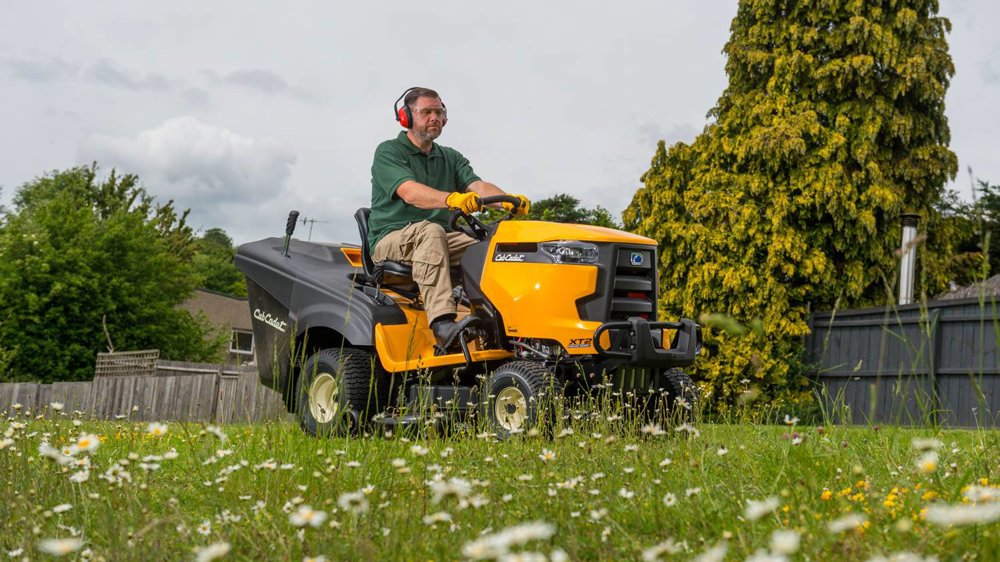
A ride-on lawnmower is an essential piece of garden machinery for professional landscapers and gardeners who have large lawns or entire estates to maintain.
But with so many options on the market, how can you be sure you’re buying the right one for you?
Our handy commercial mowers buyers guide details the different options, factors to consider, and the right questions to ask to guarantee you’ll end up with the optimal lawn mower for your needs.
How do I know if a ride-on lawnmower is for me?
Walk-behind mowers, for all their benefits, can be physically demanding if you have a large area of grass to maintain.
If you’re cutting upwards of 2,000 square metres, it’s probably time to invest in a ride-on mower. You’ll cut areas faster and more efficiently and often ride on lawn mowers are better suited to tackling rural landscapes and undulating terrain because of their power.
There are broadly speaking five types to consider, each offering its own range of benefits:
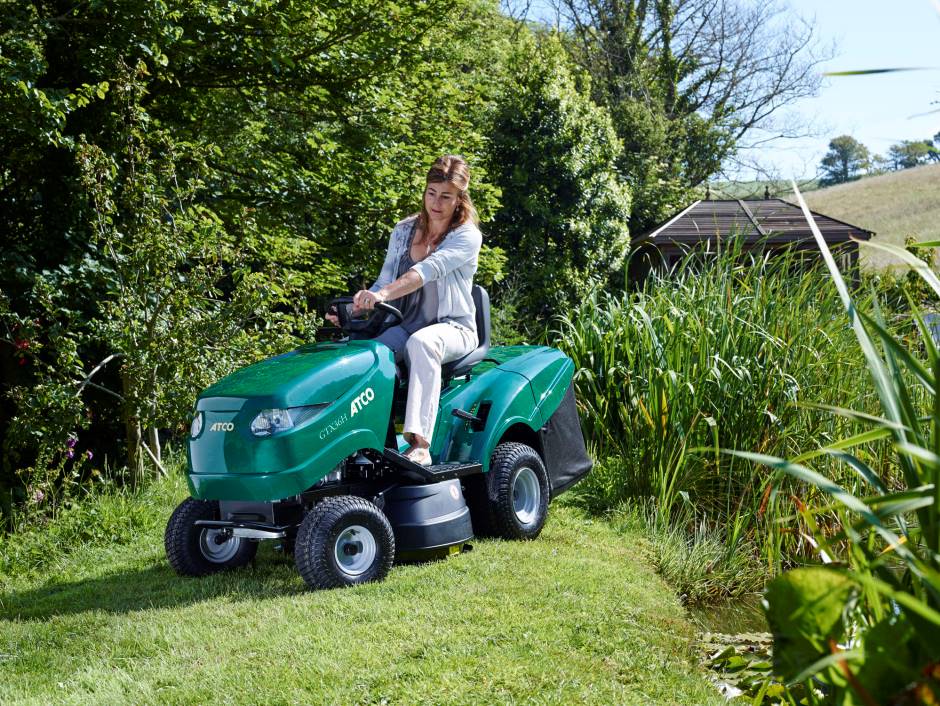 Compact ride-on mowers
Compact ride-on mowers
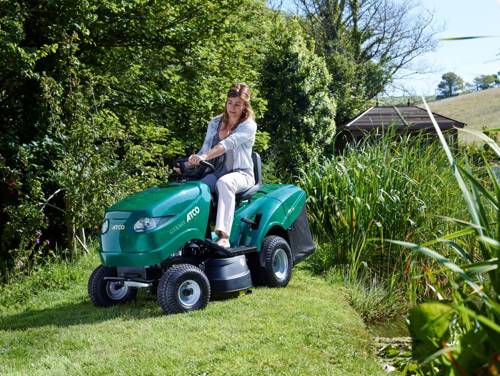
Lightweight and smaller in size, these mowers tend to be for homeowners with a large lawn, rather than professionals.
They’re designed to be narrower than some of the more heavy-duty models on the market making them good for negotiating pathways and standard-width access gates in domestic gardens.
Lawn tractors
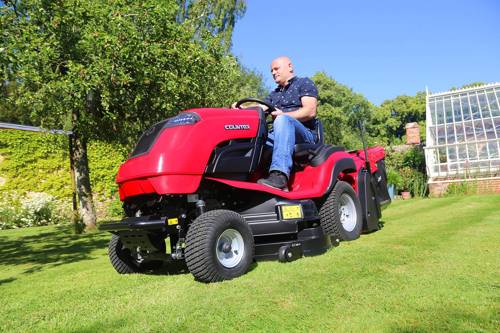
Larger than ride-on lawn mowers, lawn tractors are powerful pieces of garden machinery, making them well equipped to cope with areas from 0.5 to 1.2 hectares in size.
They’re best suited to large gardens and rural areas and will even cope with tough terrain, although they can struggle with steep sloping ground.
They come with wider cutting decks and, often, a larger set of features including hydrostatic transmission, allowing you to mow through a wide range of speeds, or the ability to use attachments such as shovels, aerators and trailers, broadening the remit of your work.
Zero-turn lawn mowers
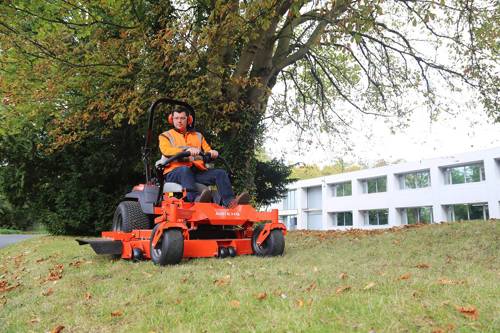
The use of these ride-on mowers for commercial work has grown in popularity in recent years thanks to their many benefits, including being regarded as one of the most efficient ways to cut large areas from 1.2 to 2 hectares in size.
Their efficiency comes from their 360-degree turning circle, which is achieved with individual hydraulic control handles for each wheel. This equips the operator with the power to cover the entire area far more quickly than with a standard ride-on mower where each turn might involve several manoeuvres.
With this level of manoeuvrability, these lawnmowers are extremely good at negotiating close proximity for tight cutting around obstacles.
However, they can be more expensive and while they have speed and efficiency on their side, they are slightly more challenging to handle, so can take a while to operate with ease. If your budget can stretch a little further, it’s a great choice for boosting the productivity of your working day.
Front mowers
A front mower is any ride-on mower with a front-mounted cutting deck. Front mowers allow you a better view of the cutting area and cut around and under obstacles more easily, reducing the need for additional strimming work. There are several other advantages of choosing a front-mounted deck that we cover in more detail below.
Stand-on mowers
Technically, a stand-on mower is a ride-on, because the machine is carrying the user. Stand-on mowers were developed for those who don’t want to sit for long periods, for example operators who suffer with back issues. The only real difference between the stand-on and their seated cousins is the lack of a seat, though this can bring extra advantages. For example, they can be better at cutting uneven terrain as the rider can shift their weight as needed.
Many operators prefer these machines as they make mounting and dismounting quicker and easier as well as giving a higher vantage point for a better view of the lawn and surroundings as you mow.
Evaluate your needs
Size and scale
What is the size of the garden or space you have to maintain? What is the type and condition of vegetation? The more dense the vegetation the more power you need, and if you’re regularly faced with very large areas you’ll want to pay particular attention to the size of the cutting deck: a wider deck means you can achieve a wider cut in a single pass, increasing productivity and reducing the time per task.
Terrain
What’s the terrain like? If you’re maintaining largely flat, open spaces, a more basic ride-on lawnmower should suffice.
If an impeccable lawn is the goal, explore a more advanced model that comes with the option to add lawncare attachments such as aerators, scarifiers, rollers and sprayers.
If you’re regularly faced with undulating landscapes, steep slopes or rough terrain you’ll need a machine with more power and, in some cases, specialist machinery such as remote-controlled slope mowers offer the safest way to cut dense growth on hillsides.
Are there any obstacles you need to navigate? A front cutting deck allows for easier manoeuvrability around any obstacles such as trees, benches and ornaments.
Frequency of use
Depending on your desired finish, some grass may need cutting several times a week during the peak growing season. This is a tall order for someone responsible for hectares of land at one time.
As a professional, you'll need a mower that can withstand the demands of frequent use, long cutting hours and regular transportation. Durability is key and it will pay in the long-term to invest in a mower designed for commercial level use.
This type of machine can be more expensive upfront, but generally comes with a higher build quality, meaning a more reliable mower with a longer life and less downtime for your business.
Storage and transportation
Give thought to how and where you plan to store your mower. Do you have space in a garage, workshop, or shed to accommodate it? And does it need to be transported in a van or trailer? If so, be sure to check machine dimensions very carefully to guarantee it fits.
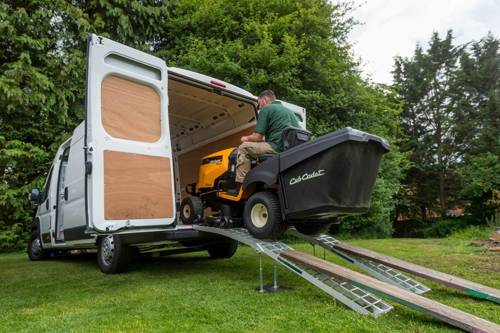
What cutting width do I need?
Generally speaking, the larger the lawn the wider the cutting deck required. The larger the deck, the fewer passes you’ll need to make of the lawn when mowing.
A lawn approximately 0.2 of a hectare would suit a cutting deck that’s up to a metre in size.
0.2 hectares to 0.8 hectares is better suited to a deck that’s 106cm to 122cm, and any lawn greater than 1.2 hectares should be mowed with a deck that’s a minimum of 127cm wide.
Front-mounted or mid-mounted mower?
Ride-on lawnmowers either carry the cutting deck at the front of the mower or at the mid-point of the machine chassis, underneath the seat of the operator. There are distinct benefits to each.
On a front-mounted lawnmower, the operator can easily maintain visual contact with the cutting deck as it’s located in front of the operating cockpit. This enables a thorough, well observed working approach and with the deck moving independently from the tractor itself, it’s able to follow ground contours, offering a smooth flow.
With front-mounted commercial mowers, the grass doesn’t get flattened by the weight of the mower prior to cutting and with the cutting deck positioned out in front it can access awkward areas or cut around branches, hedges, trees, benches and garden ornaments. The way it cuts means you can minimise the need for strimming too, saving time for the operator.
With mid-mounted commercial mowers, the cutting deck is tucked away under the cockpit which reduces the overall length of the machine.
Mid-mounted commercial mowers give a clean, sharp professional cut on grass that isn’t full of obstacles or roughage, and have the advantage of often being adaptable for other garden tasks by using attachments.
Engine
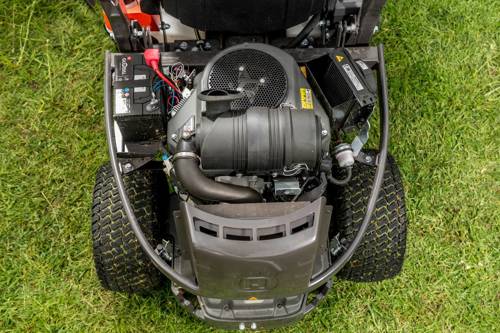
If there’s one take-home message from this guide that sticks, it should be to always buy the best engine you can afford.
The power and quality of the engine you buy will be the determining factor in how effective and long-lasting your mower is, and how varied the tasks are that you can perform.
Many leading lawnmower brands fit engines from specialist engine manufacturers, rather than using cheaper non-branded engines, and there’s good reason – a professional ride-on lawnmower is a serious machine - possibly the backbone of your business - and that requires serious, dependable and reliable power.
Horsepower is the best way to rate power in a ride-on mower. Some walk-behind mowers are rated in torque, which describes how much power goes into turning your lawnmower’s rotary blade, but horsepower is the more traditional method for evaluating power in larger machines.
Some of the more compact ride-on mowers, designed primarily for domestic use will be powered adequately by a single-cylinder engine, however, professional machinery will require twin-cylinder power to cope with a variety of terrain, grass types and cutting speeds. A 90-degree V-twin configuration causes less vibration and is more durable.
And, of course, whichever engine you choose, be prepared to look after it. Tasks such as checking and replacing oil and cleaning out the engine and filters will keep it working in premium condition for longer, protecting your investment.
Efficiency
Basic care and maintenance can improve the efficiency of your ride-on lawnmower.
Simple tasks such as changing spark plugs regularly can help to save fuel because a hot spark ignites the fuel faster.
Similarly, keeping the underside of the mower free from debris and wiping the mower blades to keep them clean will avoid unnecessary friction which uses more fuel.
Changing oil filters will help to increase fuel efficiency too.
The greater load you place on an engine, the more fuel you’ll use so if you don’t need to tow heavy attachments remove them.
Refer to the owner's manual for recommended maintenance checks or before undertaking any maintenance work.
Consider your clippings
Many ride-on mowers come with a clippings catcher or bag, which is located at the rear of the mower and will catch the clippings as it cuts. It’s mess-free and convenient but emptying the bag can be time-consuming, laborious or for those mowing very large areas, impossible.
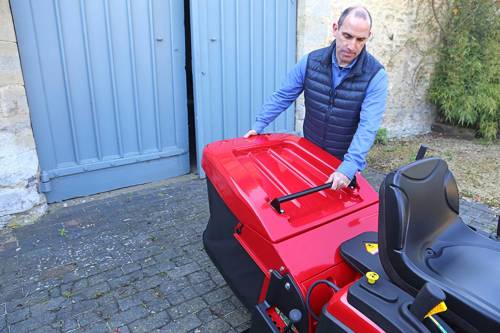
There are two alternatives – side discharging and mulching mowers.
Side-discharge mowers recycle the clippings (and the nutrients therein) directly back onto the lawn by spraying them from a dispenser chute located on one side of the mower.
It can reduce fertiliser costs and save time as there’s no bag to empty. However, the blowing out of clippings can be a little messy. Some customers may also not be keen, for example, if they want to be able to use the area after you’ve cut.
Mulching mowers also deposit the grass clippings back onto the lawn but cuts the clippings into tiny pieces before leaving them on the ground directly below where the blade is located. You need mulching capability in order to do this, because special mulching blades are required.
Either bagless option offers some great lawn benefits and will enable the operator to finish the job much faster than with its bag-carrying counterpart.
Comfort
As you’ll spend riding time sitting down it’s vital you find a mower with a comfortable, adjustable seat. Some seats come with armrests or high backs for additional lumbar support. These are particularly useful on longer rides.
Other features can make your riding time more comfortable such as additional legroom, sport-style steering wheel or cup holders. What you choose is down to user preference but remember, if the mower is to be used by a team of people you’ll want easy-to-adjust features making it simple to adapt for each rider.
Low vibration models can be a good way to reduce the impact of prolonged riding, making the experience even more comfortable.
How much should I spend on my mower?
Buying a new ride-on mower can feel like a significant financial outlay, but it’s a substantial machine and you can expect to pay anything upwards of €4,000.
The more powerful the mower the more expensive it will be, especially if it’s made by a market-leading brand. But there’s no denying that with quality comes a more robust, long-lasting product, which is a must for professional landscapers and gardeners.
If you’re prepared to invest time into the upkeep and maintenance of your machine and truly look after it, you will optimise its lifespan and be rewarded with the reliability you need for your business.
Attachments
Lawn tractors can pull a variety of useful attachments, enabling it to do more than just cut grass. These can include lawn aerators and scarifiers, lawn rollers, chain harrows, chipper shredders and trailers.
Whether or not attachments are worthwhile depends on the size of the area you're maintaining. Before you go ahead and buy a raft of attachments, however, consider what you really need and if you have the space for them.
Properly considered, however, certain attachments to your ride-on can be a useful time-saver and expand your business offering to customers.
Should I listen to reviews?
Reviews are a valuable source of information that can inform your buying decision, but be careful about who you trust. Research models on reputable blogs and review sites. You might also check what landscaper ‘influencers’ such as Jimmy The Mower and John Ryan are reviewing and using.
While garden machinery dealers are of course in the business of selling products, they will have a broad range of brands and are usually very knowledgeable about the industry and available machinery. As such, they can be a great source of valuable information.
Lawnmower warranty options
In making a sound investment in a high-quality commercial ride-on mower you would hope to avoid the need to claim on a warranty.
However, unexpected issues can occur which is why it’s good to find a manufacturer who can provide a class-leading warranty offering unlimited hours cover whether you’re a commercial or private customer.
For example, Kawasaki Engines covers the first three years for four-stroke engines.
Ensure there is a clear agreement in place for replacement, repair, or refunds.
Where to buy?
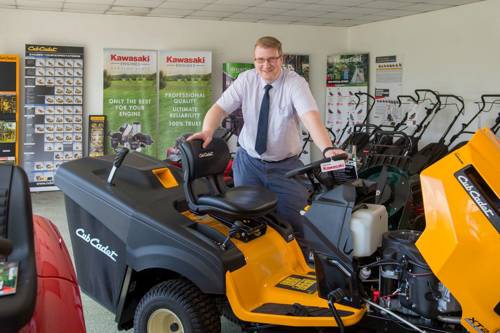
While it’s possible to buy a ride-on mower online, most professionals look to a trusted local dealer.
There are hazards in buying such high-value products from online retailers. You won’t be able to try items before you buy and they’re unlikely to offer the same level of support as a dealer - from assistance with choosing the right product to after-sales care such as sourcing genuine parts.
Professional equipment and machinery is more than the item itself, but the customer care that helps to prolong its life and give you the best value for your investment over the long term.
Examples of manufacturers
Leading manufacturers offer a good range of mowers to suit all needs and requirements. Kawasaki's market-leading 4-stroke engines power the following brands available across Europe: Ariens, ATCO, Countax, Cub Cadet, Etesia, Husqvarna, Hustler, John Deere, SCAG, STIGA, TORO, Westwood, Wisconsin.




